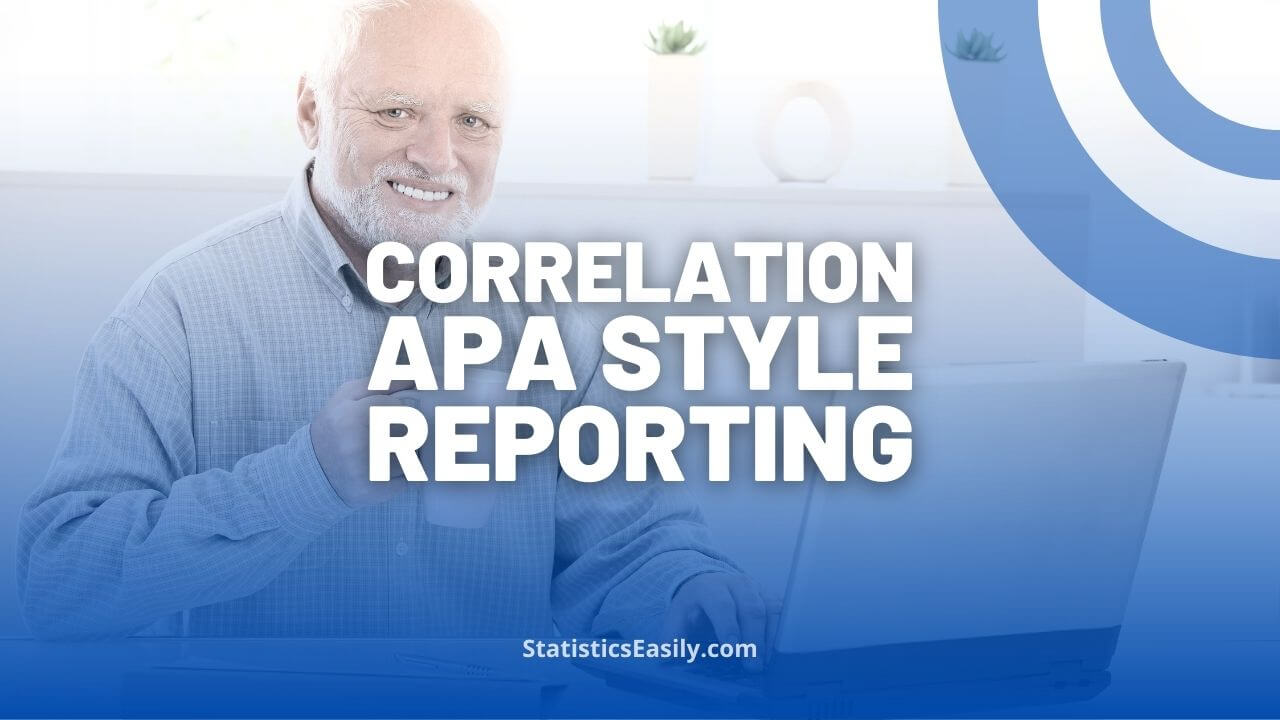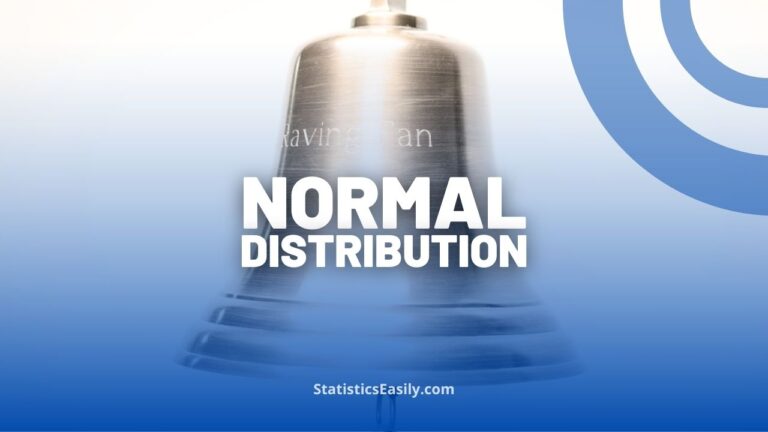How to Report Pearson Correlation Results in APA Style
You will learn how to accurately report Pearson correlation results in APA style for more straightforward communication of your research findings.
Introduction
Knowing how to report your results effectively and clearly is crucial when conducting statistical analyses. This guide provides a detailed step-by-step explanation of how to report Pearson correlation results in APA style. The APA (American Psychological Association) style is one of the most commonly used formats in academic writing. It provides clear and consistent rules for presenting data, ensuring readers can understand and evaluate your work quickly.
Highlights
- Pearson correlation is used to evaluate the linear relationship between two variables.
- The correlation coefficient ‘r’ ranges from -1 (perfect negative correlation) to +1 (perfect positive correlation).
- A value of ‘r’ near 0 indicates a weak correlation if the p-value is statistically significant.
- There’s no significant correlation if ‘r’ is near 0, and the p-value is not statistically significant.
- When reporting correlation, you should include the type of analysis, the relationship, the significance level, degrees of freedom, and the correlation coefficient.
Ad Title
Ad description. Lorem ipsum dolor sit amet, consectetur adipiscing elit.
Step-by-Step
1. Report the Correlation: Start by identifying the type of statistical analysis conducted and its purpose. State this explicitly if you have performed a Pearson product-moment correlation to assess the relationship between two variables. This could be something like: “A Pearson product-moment correlation was conducted to evaluate the relationship between variable X and Y.“
2. Describe the Relationship: The next step is to describe the relationship the correlation coefficient indicates. The correlation can show a positive, negative, or no relationship. In a positive correlation, both variables increase together, while in a negative correlation, one variable increases as the other decreases. If there is no correlation, the variables do not appear to affect each other.
3. Report the Significance Level: The significance level, often called the p-value, is integral to your results. The p-value measures the probability that any observed correlation occurred by chance. For example, a p-value of less than 0.05 is commonly accepted as statistically significant. In APA style, this would be reported as “p < .05.”
4. Report the Degrees of Freedom: The degrees of freedom are another critical value in your correlation analysis. For a Pearson correlation, the degrees of freedom equals the number of pairs minus 2. APA format reports this as (df = __).
5. Report the Correlation Coefficient: The correlation coefficient determines how strong and in what direction two variables are related. This coefficient, represented as r, ranges from -1.0 (a perfect negative correlation) to +1.0 (a perfect positive correlation). A correlation coefficient of 0 (zero) indicates no linear relationship. For example, a strong positive correlation might be reported as “r(30) = .75, p < .05”, suggesting a substantial positive relationship between the two variables. Conversely, a weak negative correlation might look like “r(30) = -.25, p < .05”, indicating a weak negative relationship.
Include Additional Relevant Information
To make your Pearson correlation analysis report more complete, including any other pertinent information is essential. These may encompass:
Visual Representation: A scatterplot could be included to visually represent the correlation. This graph depiction not only helps in intuitively understanding the strength and direction of the relationship between the two variables, but it’s also crucial for verifying the assumption of linearity and the absence of significant outliers.
Assumptions Verification: Conducting and reporting on a Pearson correlation analysis requires meeting certain assumptions. These include:
- Independence of Observations: Each pair of observations should be independent, meaning one observation doesn’t influence or is influenced by another.
- Normality: Both variables should be normally distributed in the population. Significant deviations from this assumption could impact the validity of your results.
- Linearity: There should have a linear relationship between the two variables, meaning the data on a scatterplot should fit approximately into a straight line.
- Absence of Significant Outliers: Pearson correlation can be unduly influenced by outliers. A single outlier can significantly affect the correlation, making it significant when it’s not, or vice versa.
- Variable Type: Pearson correlation requires both variables to be continuous. Other correlation measures, like the point-biserial correlation for dichotomous variables, should be used when dealing with categorical variables.
If any of these assumptions were violated and you took any steps to address the violation (like applying a transformation to the data), these should be clearly reported.
Ad Title
Ad description. Lorem ipsum dolor sit amet, consectetur adipiscing elit.
Example
An example of how to report a Pearson correlation in APA style might look something like this:
A Pearson product-moment correlation was conducted to assess the relationship between chocolate consumption and cognitive performance. There was a significant positive correlation between the two variables, r(30) = .45, p < .05, with high levels of chocolate consumption associated with higher cognitive performance.
In this example, the correlation coefficient of .45 indicates a moderate positive relationship, and the p-value (< .05) suggests this correlation is statistically significant.
How to Report Correlation in APA Style
The correlation coefficient, denoted by r, is a numerical value ranging from -1 to 1. This value indicates the strength and direction of the correlation. For example, in APA style, it’s typically reported as “r = .” or “r(df) = .“.
- If the correlation is positive and strong (closer to 1), you might state, “There was a strong positive correlation…“
- If the correlation is negative and strong (closer to -1), you might state, “There was a strong negative correlation…“
However, if the r-value is near 0 and the p-value is statistically significant (p < 0.05), it indicates a weak correlation. In this case, you might state, “There was a weak correlation…” regardless of the direction of the correlation.
Suppose the p-value is not statistically significant (p > 0.05). This suggests no significant correlation; in that case, the r-value is not meaningfully different from 0. In such situations, you might state, “There was no significant correlation…“
After reporting the correlation coefficient and its significance level, your readers should clearly understand the relationship between your variables.
| Correlation Coefficient (r) | Direction | Strength | Interpretation |
|---|---|---|---|
| 0 | None | None | No correlation |
| 0.01 – 0.29 | Positive | Weak | Weak positive correlation |
| 0.30 – 0.49 | Positive | Moderate | Moderate positive correlation |
| 0.50 – 0.69 | Positive | Strong | Strong positive correlation |
| 0.70 – 0.89 | Positive | Very Strong | Very strong positive correlation |
| 0.90 – 1.0 | Positive | Perfect | Perfect positive correlation |
| -0.01 – -0.29 | Negative | Weak | Weak negative correlation |
| -0.30 – -0.49 | Negative | Moderate | Moderate negative correlation |
| -0.50 – -0.69 | Negative | Strong | Strong negative correlation |
| -0.70 – -0.89 | Negative | Very Strong | Very strong negative correlation |
| -0.90 – -1.0 | Negative | Perfect | Perfect negative correlation |
Please note that these categories are commonly used, but the exact interpretation can be subjective and depends on the context. For example, a “strong” correlation in one field may be considered “weak” in another depending on the typical size of correlations in those fields. Additionally, whether a correlation is considered significant or not depends on the sample size.
Conclusion
Understanding how to report correlation in APA style is essential for academic writing in numerous fields, notably social sciences. The explicit, concise nature of the APA style allows for the effective communication of statistical findings, facilitating comprehension and further analysis.
Always ensure your report includes the correlation value, the significance of the correlation, and the degrees of freedom. Also, describe the relationship between the variables, as this helps your readers understand your results better. With these tips, you can successfully report Pearson correlation results in APA style.
Ad Title
Ad description. Lorem ipsum dolor sit amet, consectetur adipiscing elit.
Recommended Articles
Enjoyed this article? Don’t stop here! Explore our blog for more insightful articles on statistical analyses and APA formatting rules. Keep learning with us!
- Correlation in Statistics (Story)
- Master Cohen’s d in APA Style (Story)
- Can the Correlation Coefficient Be Negative?
- Understanding Spearman Correlation in Data Analysis
- Correlation vs. Causation: Understanding the Difference
- Coefficient of Determination vs. Coefficient of Correlation
- How to Report Simple Linear Regression Results in APA Style
- How to Report Results of Multiple Linear Regression in APA Style
- Correlation in Statistics: Understanding the Link Between Variables
Frequently Asked Questions (FAQs)
It’s a statistical method used to determine the degree of the relationship between two variables.
It indicates the strength and direction of the correlation, ranging from -1 to +1.
A weak correlation occurs when ‘r’ is close to 0 and the p-value is statistically significant.
If ‘r’ is 0 and the p-value is not statistically significant, it suggests there’s no significant correlation.
A p-value measures the likelihood that the observed correlation occurred by chance.
It suggests that the observed correlation is statistically significant.
The degrees of freedom (df) equal the number of pairs minus 2.
Include the type of analysis, the relationship, the significance level, degrees of freedom, and the correlation coefficient.
It ensures clarity and precision in the report, aiding the reader’s understanding.
A well-structured report that adheres to the APA style can enhance clarity and efficiency in communication.









كيف أشتري الكتاب حيث لا يوجد لدينا في سوريا فيزا كارد
Thank you for your interest in the book! If you don’t have access to a VISA card, there are some online services — depending on your country’s regulations — that allow you to create virtual cards or international payment solutions, such as Wise, Payoneer, or even local banks offering prepaid options. You may also try using platforms like Google Pay or regional alternatives. I recommend searching for virtual payment solutions available in your country that support international purchases. I truly hope you find a way to access the material!